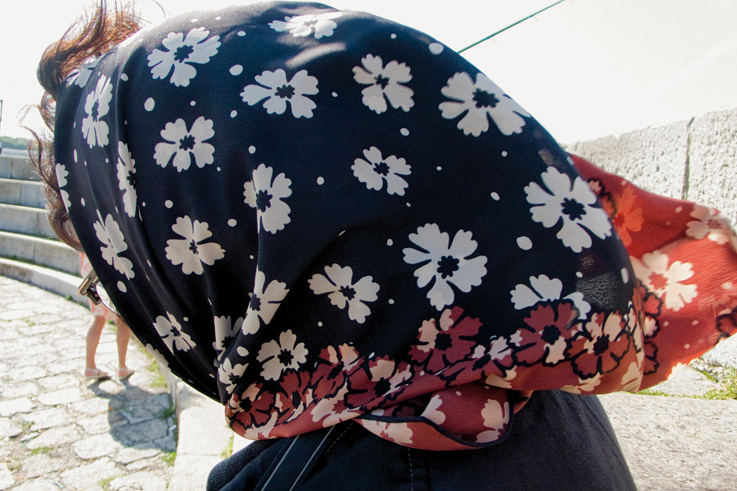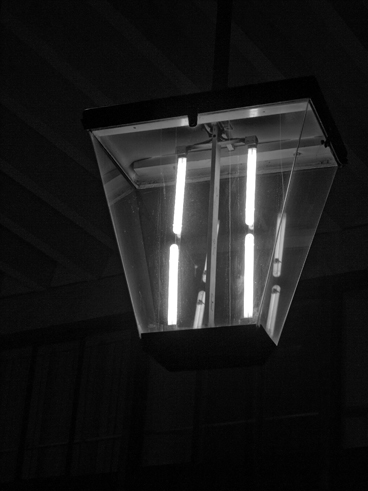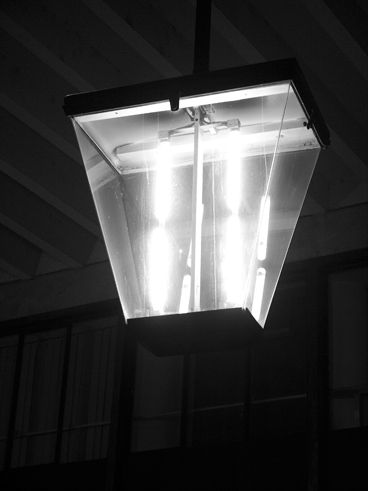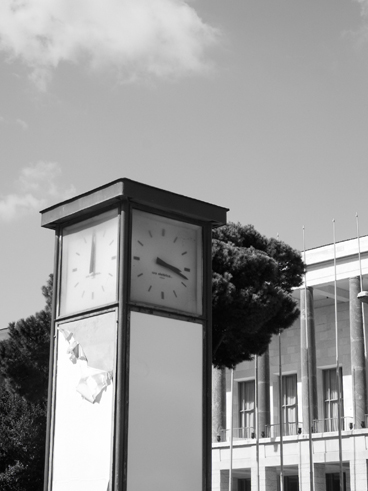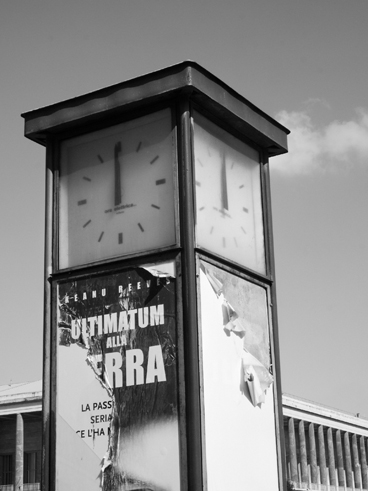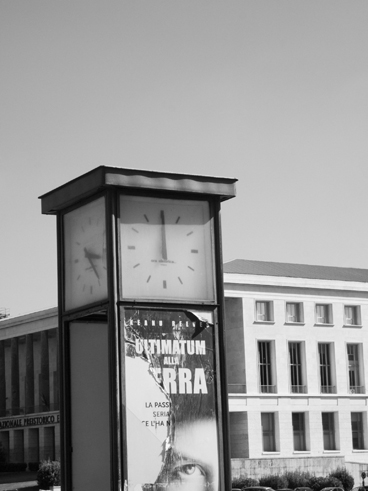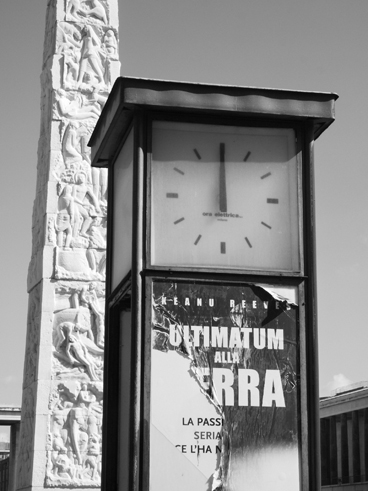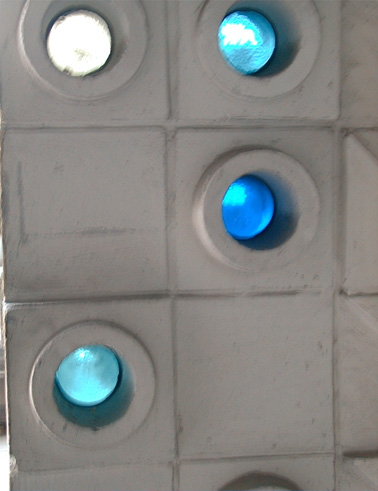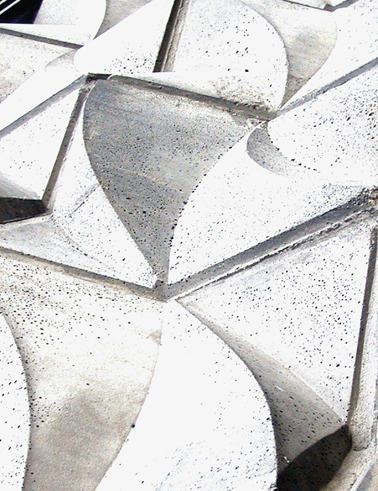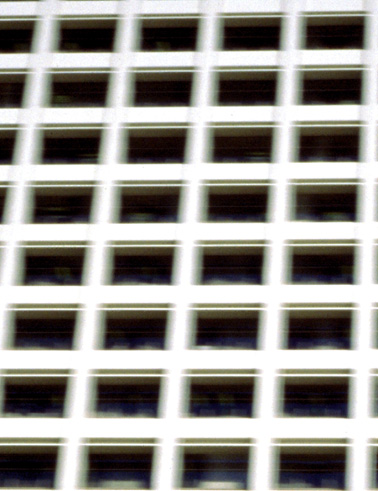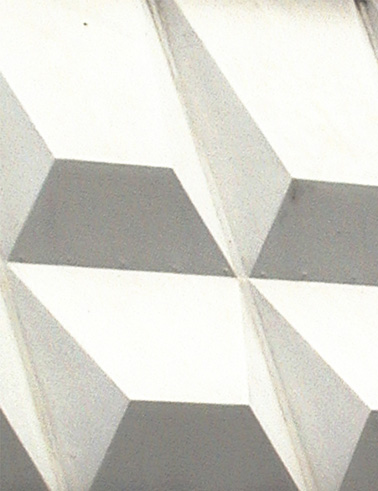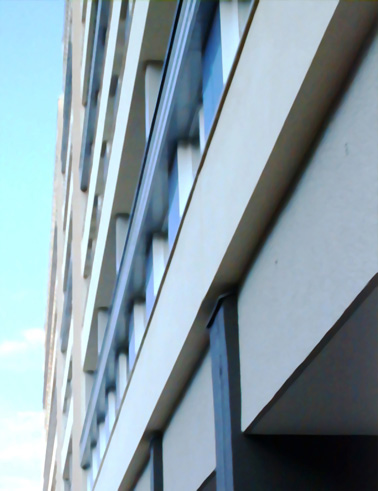Press information
Heidi Specker
Photography
Infos
Press preview
12.7.2018, 11 am
Opening
13.7.2018, 6 pm
Duration
14.7.–26.8.2018
Opening hours
Tue – Sun, 10 am to 5 pm
Curated by
Reinhard Braun
The exhibition is accompanied by an eponymous publication in the Edition Camera Austria.
The exhibition is part of Architektursommer 2018
Press downloads
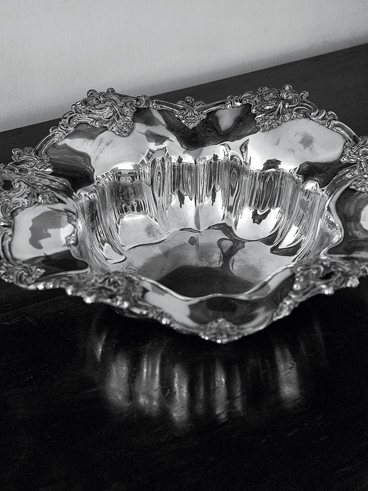
Press Information
Starting with her observant attentiveness and her precision in seeing, coupled with the montaging, grouping, and sequencing of the images created, since the 1990s Heidi Specker has been generating visual narratives that at once disassemble and reassemble, dissolve and recompile her spaces of interest through the images: architectures, urban spaces, gardens, portraits in the studio, journeys, living areas. “Everyday things should appear strange, and much that seemed natural should be recognized as artificial,” wrote Bertolt Brecht. Thus, in her essayistically arranged series, Heidi Specker always also shows the access that she undertakes with and through her photographs, showing how she inscribes herself into a reality with these images, visually unleashing its poetics, but also sustaining its unfamiliarity, remoteness, and ambivalence in order to continually challenge the power of the images, whose effects we all share. Here, her gaze is never immediate or direct, the objects hardly ever shown at eye level, but rather from slightly above or slightly below, from the side, shifted, as if they had always been engaged in conflict with that being shown. And she finds and invents details, with the “whole” that it might be remaining outside of her images and barely ever imaginable from the series.
The exhibition at Camera Austria does not present a cross-section of these different series. It does not intend to be representative of the extensive artistic work of Heidi Specker or even to show or negotiate exemplary photographs. The exhibition goes back to a dialogue between the artist and the curator lasting several months, over the course of which the quest for a common language about these images was concentrated on several works in particular.
One such series was “TEILCHENTHEORIE” (PARTICLE THEORY). To the question “What is the city made of?” Heidi Specker “replied” in 1998 with details from architectural surfaces of Berlin architecture, with a liberation of recurring façade decor from its original architectonic coherence and mélange, thus setting these details free, making them different, useless, placeless, beautiful, but also unfamiliar. The response to the issue of totality is its dissolution, a theory of particles. The city is composed of surfaces; we can behold or ignore them, perceive the creative drive or not, like the vacant lots. Something is there to be seen, or maybe not. Back then just as now, thirty years later. A typology arose that, due to the renovations that have since been initiated, is probably already in the process of disappearing again, and yet it still retains its validity. Today the series evokes no sense of nostalgia, though it does to a certain extent represent a survey of the past, of the history of a city that is associated with its architecture like hardly any other. This survey is subjective and objective at once, reconstructive and utopian at once. Although Specker focuses on architecture very directly and concretely, this is not always evident in the images. “TEILCHENTHEORIE” clearly shows how she, in her work, always forgoes something, or how she does not impose representational claims on photography, or how she simply considers them inappropriate. The artist herself speaks of a disharmony of sorts between the image and the subject, which do not always coincide, for the one cannot be presumed or thought to be the other. In this way, Specker upholds a crucial difference that the image reserves for the realm of photography, and reality for the realm of reality. “TEILCHENTHEORIE,” in any case, and this may be asserted without risk, is not representative. The parts do not represent a whole, for the parts are simply parts on which light is shed. Each individual part receives attention, in a non-hierarchical way, a block of images, a being-together of images—a community of images?
Books have been an important sphere of action for Heidi Specker. In these books, the series are always regrouped anew, arrayed, the narrative shifted, with the sequence never seeming to be definitively set. In the exhibition at Camera Austria, a book likewise plays a prominent role: a spread from THREE WOMEN, edited in collaboration with Anna Viebrock in 2013, on which the head of her friend clad in a blue-and-red headscarf is seen diagonally from the upper left. This is the only image shown as part of a book in a display table. Perhaps the fate of photography does not inevitably have to end as a framed or unframed picture on the wall.
On a double-page spread of the book, almost only this headscarf is visible, almost only this white floral pattern—daisies—against the blue and the red background, along with a suggestion of a pair of glasses, a forelock stirring in the wind, the sun, a stairway in the background. At the sea? A castle? Yet, really, this is not important; it is the headscarf that captures the gaze and the picture. A headscarf like the surface of an architectural structure, like a shroud, like the décor of architecture, beautiful, recurring, unique and banal, structuring and random, constructive and transient, all at once. The headscarf, the woman, and the sun, and perhaps even more than the photographer could see or really saw, or maybe did actually see. The image comes together; what can come together does so, as to result in an image; what the photographer has evoked comes together, yet without her being able to fully assert control. A fragile encounter, a perception, characterized by uncertainty—or even better, by caution or prudence, maybe even by respect (an anachronistic idea, perhaps drifted out of time).
Another image: the large-format shot of a silver seashell bowl, discovered by the artist in the former apartment of the painter Giorgio de Chirico in Rome (“Piazza di Spagna 31, Motif IV,” 2010), shows a comparable seductive surface, glossy, organic, flowing, with a certain excess of form and materiality. It spells a kind of visual transgression and delimitation, drawing the gaze toward it and mirroring it back, a treasure that doubles itself, as it were, due to the reflection of itself on the surface on which it has been placed, and how it breaks away from this mirroring, from this reverberation of its very self, in an act of differentiation. To a certain extent, the bowl fosters an image of itself, exhibiting another image of itself, which then redoubles, if not multiplies, in the picture taken by the photographer. It is a game of distinctions, of differences, a game of reality and illusion, of seduction and denial, a game of visibilities, which presents itself as photography. Something is there to be seen, or maybe not.
Between these images, which serve, in a sense, as hinges within the exhibition, which specify a change in direction, we also find some which signify a confluence of the ways in which Heidi Specker transforms things into a photograph, either at once or in passing, how she translates them into a photograph, such as in other pictures from the series “TERMINI” (2010), created during a one-year stay in Rome, and “Re-prise” (2015), the latter a remake of the book design “Ci-Contre” by Moï Wer from the 1920s. Reflections of light in windows and flies on a pane of glass, a puddle glowing red, “Ultimatum alla Terra” (The Day the Earth Stood Still) as an obsolete poster on a clock standing still, each side showing a different time, streetlamps, an exhibition opening—surfaces, acts of mirroring, where one thing stands for another, may be read as another, images that instead of recording an occurrence actually bring to light a possible transition, a possible allusion, ambiguous moments, equivocal surfaces.
At play here, after all, are photographic images in which the artist inscribes her own self to a certain extent, yet not only through the observant attentiveness and precision in seeing mentioned at the beginning of this text—there are also images displaying knowledge about history and the present, pictures that the artist sees because, for instance, they remind her of something that she knows, has seen, has read, has researched. Reducing the work of Heidi Specker to the gaze or the image as something purely visual would utterly underestimate her work, for it is in fact always engaged in an exchange—fraught with tension—with art or with the history of art or even with pop culture(s), as evident based on the presence of individuals like Peter Behrens, Germaine Krull, Moï Wer, Carlo Mollino, Robert Wise, or Giorgio de Chirico playing a central role in some of her series.
“There is no picture, there are only images. And there is some form of image stitching: as soon as there are two, there are three,” as Jean-Luc Godard wrote. This applies not only to montaged photographs, which precede an image and follow another. It also signifies those images that already exist, somewhere else, that we remember, that have helped to shape our approach to recognition and comprehension, that are at once present and yet still absent, those images that have always been there, when the photographs of Heidi Specker were created, images that lead to other images, which in turn presuppose yet other ones.
So we are especially careful, particularly in an exhibition by Heidi Specker, to avoid an understanding of images as something formal, as a form, a gestalt, a configuration, and despite this it seems as if her pictures were setting out to tempt us to pursue such an avenue of interpretation. Walter Benjamin already warned us about this: in the year 1934, he held a lecture at the Institute for the Study of Fascism in Paris, which was published under the title “The Author as Producer.” In this talk, Benjamin stated: “It [the photography of Neue Sachlichkeit] becomes ever more nuancé, ever more modern; and the result is that it can no longer record a tenement block or a refuse heap without transfiguring it. Needless to say, photography is unable to convey anything about a power station or a cable factory other than, ‘What a beautiful world!’ . . . For it has succeeded in transforming even abject poverty—by apprehending it in a fashionably perfected manner—into an object of enjoyment.”
Heidi Specker speaks—not only visually—about the world in a different way. By no means does her approach consist of a—contemporarily reflected—form of glorification, even when the pictures are beautiful, or perhaps precisely when they are beautiful, because they are beautiful for being subversive, because they separate, divide, thus analyzing, splitting, fragmenting, disassembling the whole—the world, the city, the person, the space—at first removing it from sight, taking it out of sight, in order to reorganize it, with the methods of photography, as a detail view and always as a fragmentary point of access. Perhaps one must also take care to not speak too much about the pictures themselves—maybe one should speak more about the interstices, the omissions, the elements missed, unseen, not shown between the images, about what happens, transpires, in between them, at the segue between one image and another. What junctions, what associations, what bifurcations does the artist thus construe for us?
The plasticity of a detail view of a concrete façade comes upon a—happy, so we imagine—moment during a summer trip, a windy day when a woman is wearing a headscarf, which in turn encounters a precious silver bowl in the apartment of a painter. It is almost hard to imagine circumstances further apart. Yet how do they come together, how are they allowed by the artist to come together, both connected and disjointed, autonomous and bound together through an essay by images? Is it precisely these differences, the unfamiliar among the images, that even makes this coming-together possible to begin with? Perhaps it is precisely this state of being as far apart as even possible that may collaboratively yield a new theory of particles.
Reinhard Braun
Heidi Specker, born 1962 in Damme (DE), is an artist based in Berlin (DE). Her interest follows architecture, which she extends towards interior and (so far) to portrait by content. The series “SPECKER-GRUPPEN” (SPECKER GROUPS, 1995) and “IM GARTEN” (IN THE GARDEN, 2003) dialogues architecture and nature. Her later photographs are linked to places claimed by persons: Mies van der Rohe in “LANDHAUS LEMKE” (2008) and Giorgio de Chi-rico or Carlo Mollino in “TERMINI” (2010). “In Front Of” (2015), is finally on portraits. Specker is professor for photography at the Academy of Fine Arts Leipzig (DE). Her work has been shown by Sprengel Museum Hannover (DE), Mies van der Rohe Haus Berlin, Leopold-Hoesch-Museum, Düren (DE), Pinakothek der Moderne, Munich (DE), and Berlinische Galerie, Berlin. The exhibitions are thought as conceptional as her images, especially her most recent show “Heidi Specker: “FOTOGRAFIN” (PHOTOGRAPHER) at Kunstmuseum Bonn (DE, 2018).
Images
Publication is permitted exclusively in the context of announcements and reviews related to the exhibition and publication. Please avoid any cropping of the images. Credits to be downloaded from the corresponding link.

